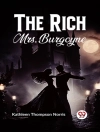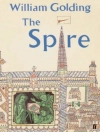In ‘New Grub Street, ‘ George Gissing intricately weaves a narrative that captures the tumultuous world of late Victorian literature, examining the struggles and moral quandaries faced by writers in a rapidly changing society. Through the lives of characters such as Edwin Reardon and Jasper Milvain, Gissing critiques the commodification of art, exploring themes of commercialism, artistic integrity, and the tension between creativity and financial survival. Stylistically, the novel melds naturalism with poignant character studies, emphasizing psychological depth and social commentary reflective of Gissing’s own milieu, steeped in the realities of literary life in London. George Gissing, a figure often overshadowed in the annals of English literature, drew upon his own experiences in the literary trenches to inform this work. Born into a lower-middle-class family, Gissing struggled with poverty and the harsh realities of the publishing world during his early career. His intimate knowledge of both personal aspirations as a writer and the critical reception of contemporaries infused ‘New Grub Street’ with authenticity, serving as both a critique of and a mirror to the struggles inherent to authorship. This novel is highly recommended for those interested in the interplay between art and commerce, as well as readers seeking an insightful exploration of the psychological and societal factors shaping literary ambition. Gissing’s mastery of character and astute observations make ‘New Grub Street’ an essential read, unearthing the sacrifices writers make in their quest for recognition.
Об авторе
George Gissing, English novelist, was born on November 22, 1857, in Wakefield, Yorkshire. He emerged as a distinguished author of the late Victorian era, with his works offering acute observations of contemporary society. Gissing’s upbringing and education at Owens College, Manchester, equipped him with insights into the contrasting lives of different social classes. His personal struggles, including poverty, a troubled marriage, and health issues, greatly influenced his writing. He is perhaps best known for ‘New Grub Street’ (1891), a novel that presents a sobering chronicle of the lives of writers in late 19th-century London, exploring themes of literary ambition, commercialism, and the precarious existence of the lower-middle class.
Gissing’s literary style is marked by a naturalistic portrayal of the human condition, often highlighting social issues and the difficulties faced by educated but impoverished characters. His narratives frequently reflect his own experiences, providing a window into the harsh realities of the struggle for artistic integrity amidst commercial forces. Gissing’s influence extended to his contemporaries and later generations, as he captured the essence of a changing society with both compassion and a critical eye. Other notable works by Gissing include ‘The Nether World’ (1889) and ‘The Odd Women’ (1893), which further cement his reputation as a significant commentator on the fin de siècle England. He died on December 28, 1903, leaving behind a legacy of literary realism and social critique.












